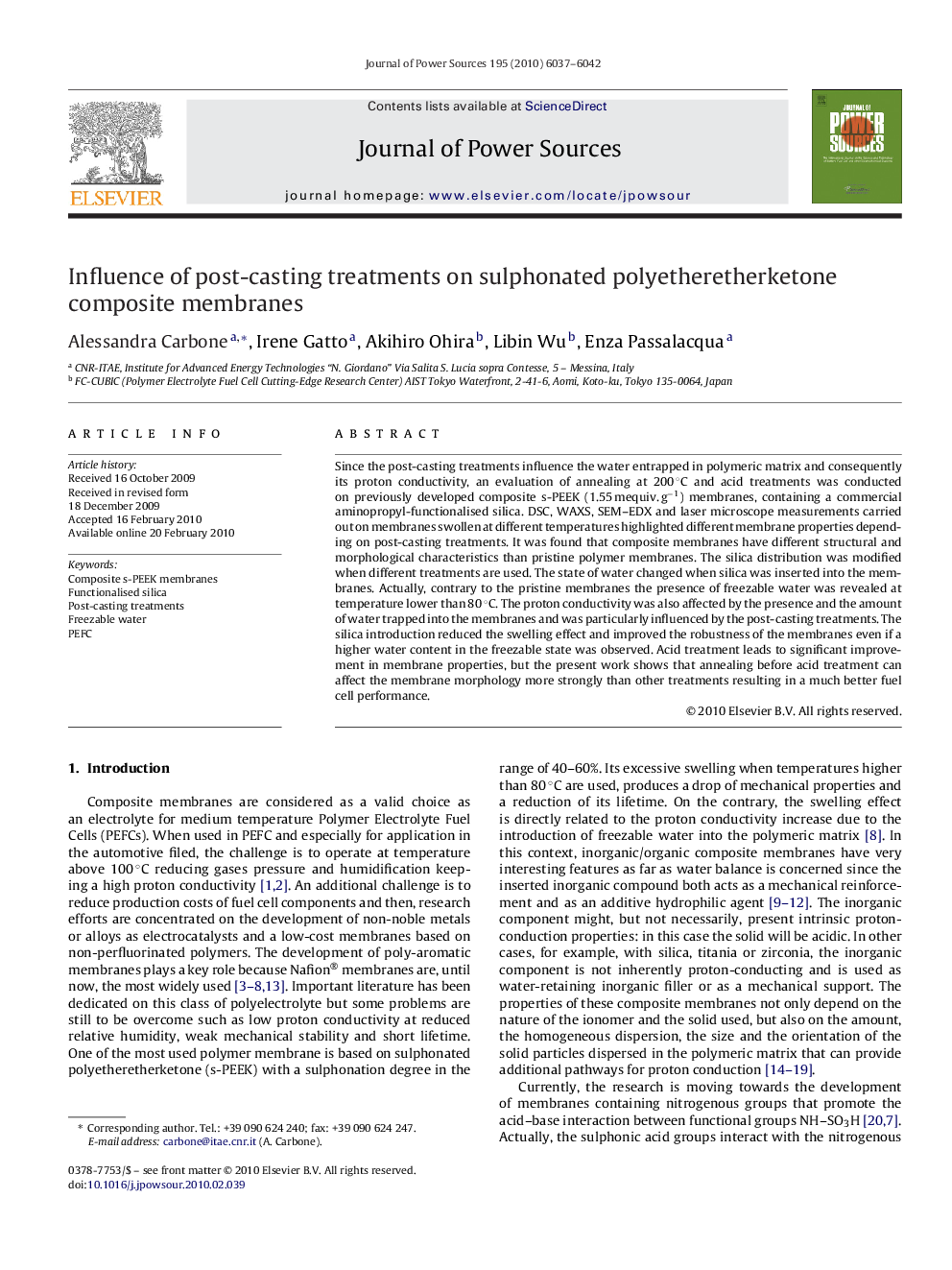| Article ID | Journal | Published Year | Pages | File Type |
|---|---|---|---|---|
| 1289001 | Journal of Power Sources | 2010 | 6 Pages |
Abstract
Since the post-casting treatments influence the water entrapped in polymeric matrix and consequently its proton conductivity, an evaluation of annealing at 200 °C and acid treatments was conducted on previously developed composite s-PEEK (1.55 mequiv. gâ1) membranes, containing a commercial aminopropyl-functionalised silica. DSC, WAXS, SEM-EDX and laser microscope measurements carried out on membranes swollen at different temperatures highlighted different membrane properties depending on post-casting treatments. It was found that composite membranes have different structural and morphological characteristics than pristine polymer membranes. The silica distribution was modified when different treatments are used. The state of water changed when silica was inserted into the membranes. Actually, contrary to the pristine membranes the presence of freezable water was revealed at temperature lower than 80 °C. The proton conductivity was also affected by the presence and the amount of water trapped into the membranes and was particularly influenced by the post-casting treatments. The silica introduction reduced the swelling effect and improved the robustness of the membranes even if a higher water content in the freezable state was observed. Acid treatment leads to significant improvement in membrane properties, but the present work shows that annealing before acid treatment can affect the membrane morphology more strongly than other treatments resulting in a much better fuel cell performance.
Related Topics
Physical Sciences and Engineering
Chemistry
Electrochemistry
Authors
Alessandra Carbone, Irene Gatto, Akihiro Ohira, Libin Wu, Enza Passalacqua,
